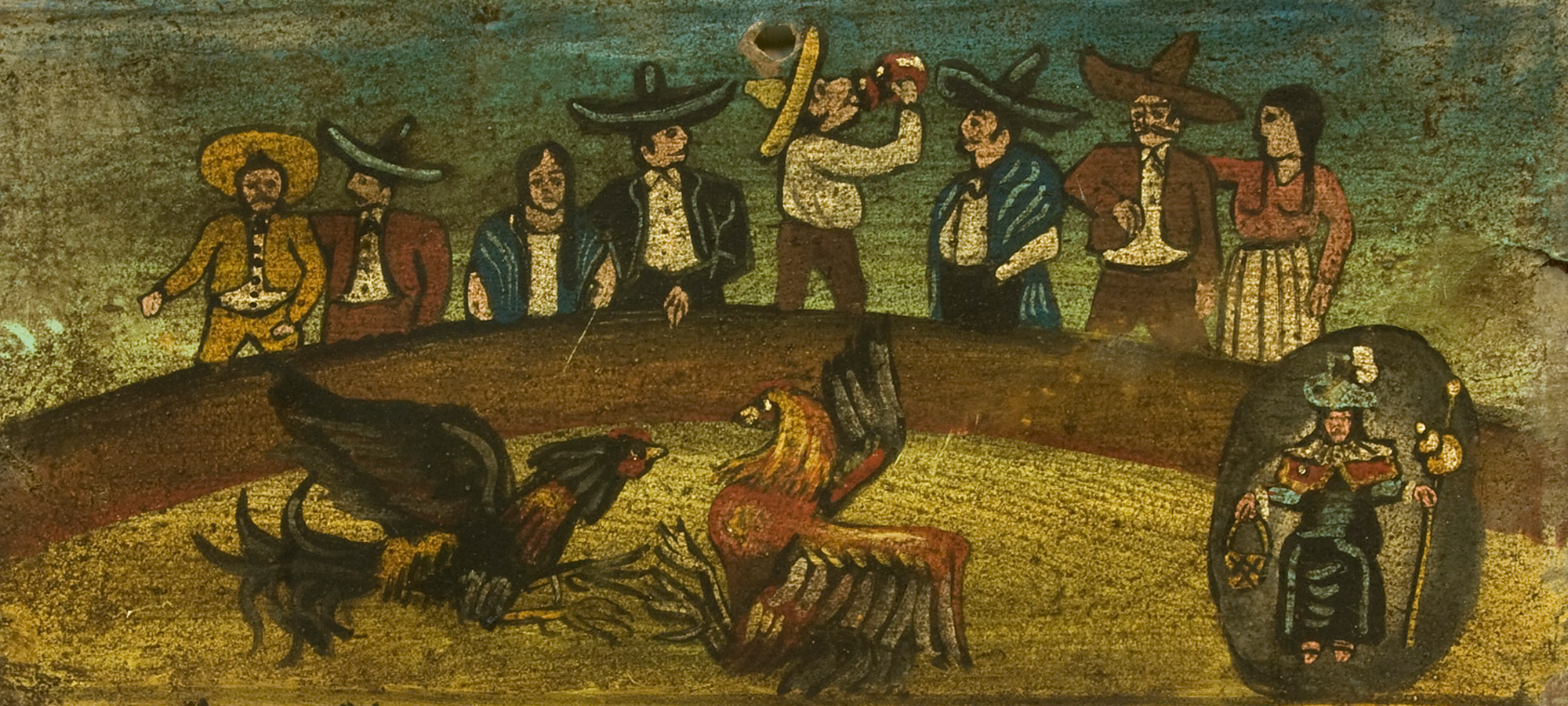
Ongoing
Selected from the museum’s permanent collection, this group of votive paintings from Mexico spans the early 19th to the mid-20th centuries. Known as ex-votos (meaning “from a vow” in Latin) or retablos (meaning “behind the altar” in Latin), these small paintings on tin are religious offerings venerating the divine or expressing gratitude for an answered prayer. Ex-votos are public and private expressions of faith meant to evidence divine intervention within daily life. These types of votive paintings characteristically depict personal narratives, often recounting details and dates of specific events that occurred. They were made by devout individuals who brought them to churches to place on altars, thus fulfilling their vows to the religious figures they believed had helped them in their time of need.
Within the images are testimonials, declaring appreciation to the divine for survival after an illness, recuperation after an accident or an attack, and even gratitude for a stroke of good luck in gambling. The Catholic icons portrayed include regional apparitions of Christ or the Virgin Mary from the Mexican state of Jalisco, such as Nuestra Señora de Zapopan, El Señor de la Misericordia de Ocotlán, El Señor de los Rayos de Temastián, as well as important figures seen throughout Mexico and Latin America such as the Virgen de Guadalupe and El Santo Niño de Atocha.